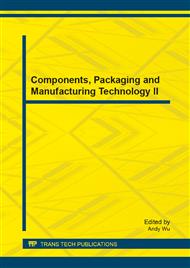p.44
p.47
p.50
p.56
p.63
p.70
p.75
p.80
p.86
Multi-Objective Optimization of Vehicle Air Suspension Based on Simulink-Mfile Mixed Programming
Abstract:
In order to reduce the road damage of heavy trucks, comprehensively considering ride comfort and road friendliness, the multi-objective optimization method of vehicle suspension parameters with non-linear air spring was presented based on Simulink-Mfile mixed programming. The simulation model including vehicle dynamics module, road roughness module, ride comfort and road friendliness evaluation index modules was constructed in Simulink platform, and the multi-objective optimization model was developed in Mfile program which took the linear weighted sum of ride comfort and road friendliness indexes as the objective. Then the suspension parameters were optimized with genetic algorithm (GA). The results showed that, compared with before optimization, the vehicle ride comfort and road friendliness could be synthetically improved. And with the Simulink-Mfile mixed programming method, the optimization of nonlinear vehicle suspension could be successfully solved in time domain, which could provide a new idea for vehicle suspension design.
Info:
Periodical:
Pages:
63-69
Citation:
Online since:
February 2014
Authors:
Price:
Сopyright:
© 2014 Trans Tech Publications Ltd. All Rights Reserved
Share:
Citation:


